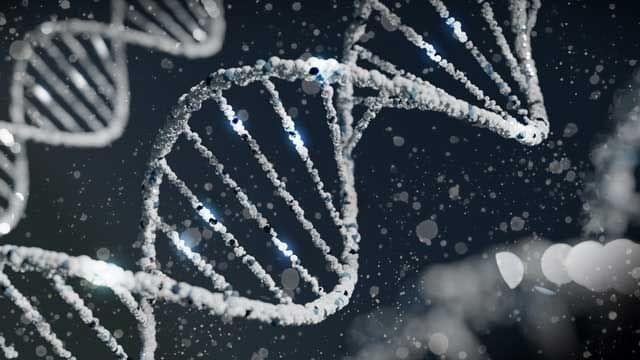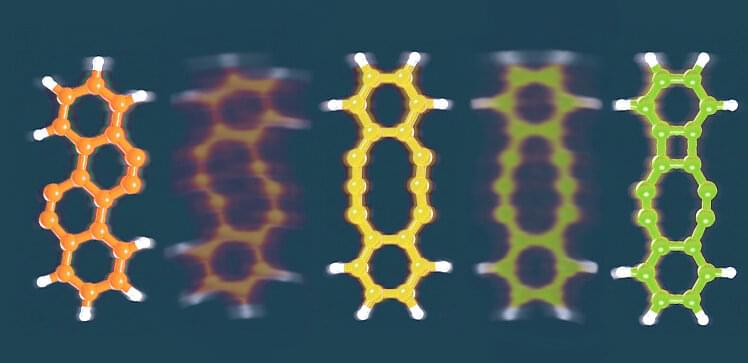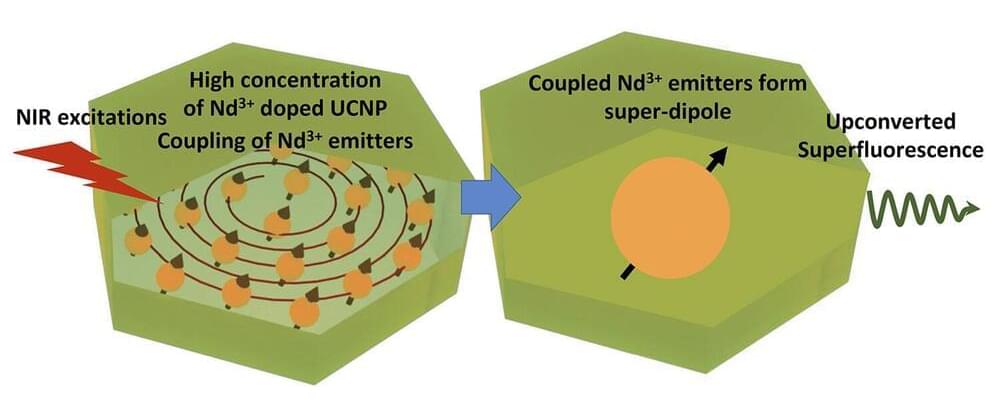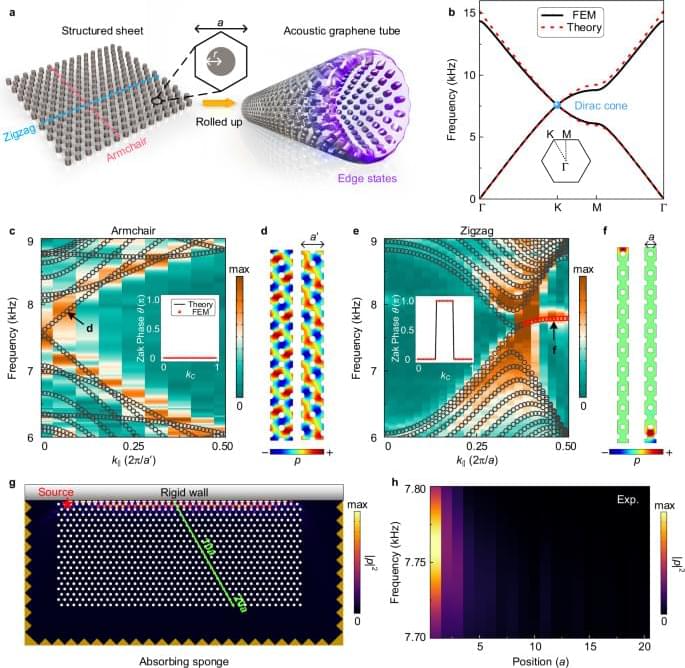The more we understand how cells produce shape and form, the more inadequate the idea of a genomic blueprint looks by Philip Ball + BIO.
Get the latest international news and world events from around the world.

Optical detection of multiple bacterial species using nanometer-scaled metal-organic hybrids
Osaka Metropolitan University scientists have developed a simple, rapid method to simultaneously identify multiple food poisoning bacteria, based on color differences in the scattered light by nanometer-scaled organic metal nanohybrid structures (NHs) that bind via antibodies to those bacteria. This method is a promising tool for rapidly detecting bacteria at food manufacturing sites and thereby improving food safety. The findings were published in Analytical Chemistry.
According to the World Health Organization (WHO), every year food poisoning affects 600 million people worldwide—almost 1 in every 10 people—of which 420,000 die. Bacterial tests are conducted to detect food poisoning bacteria at food manufacturing factories, but it takes more than 48 hours to obtain results due to the time required for a bacteria incubation process called culturing. Therefore, there remains a demand for rapid testing methods to eliminate food poisoning accidents.
Responding to this need, the research team led by Professor Hiroshi Shiigi at the Graduate School of Engineering, Osaka Metropolitan University, utilized the optical properties of organic metal NHs—composites consisting of polyaniline particles that encapsulate a large number of metal nanoparticles—to rapidly and simultaneously identify food poisoning-inducing bacteria called enterohemorrhagic Escherichia coli (E. coli O26 and E. coli O157) and Staphylococcus aureus.


How a Certain Protein Can Cause Deadly Cancers
A discovery made by researchers at the University of California, Irvine on how a certain protein is activated in tumor cells may lead to more effective treatments for some of the most deadly types of cancer. The finding, which was led by scientists at the School of Biological Sciences, may potentially result in treatment options for the especially dangerous melanoma and pancreatic adenocarcinoma, as well as the most common type of childhood brain cancer and adult skin cancer. The study was published in the journal Life Science Alliance.
The GLI1 protein, which is essential for cell development but has also been linked to a number of cancers, was the subject of the finding. The Hedgehog signaling pathway, also known as HH, usually activates GLI1. However, scientists have known for almost a decade that crosstalk, or interaction, between HH and the mitogen-activated protein kinase pathway, has a role in cancer.
“In some cases, proteins in one pathway can turn on proteins in another,” said lead author A. Jane Bardwell, a project scientist in UCI’s Department of Developmental and Cell Biology. “It’s a complex system. We wanted to understand the molecular mechanism that leads to GLI1 being activated by proteins in the MAPK pathway.”

Scientists Have Created Microrobots That Can Automatically Brush and Floss Your Teeth
Researchers from the University of Pennsylvania demonstrated in a proof-of-concept study that a hands-free device could successfully automate the treatment and removal of dental plaque and bacteria that cause tooth decay.
In the future, a shape-shifting robotic microswarm may serve as a toothbrush, rinse, and dental floss all in one. The technology, created by a multidisciplinary team at the University of Pennsylvania, has the potential to provide a brand-new, automated method for carrying out the repetitive but important daily duties of brushing and flossing. For people who lack the manual dexterity to efficiently clean their teeth alone, this system could be extremely helpful.
These microrobots are composed of iron oxide nanoparticles with catalytic and magnetic properties. Researchers were able to control their movement and configuration using a magnetic field to either produce bristle-like structures that remove dental plaque from the wide surfaces of teeth or elongated threads that can slide between teeth like a piece of floss. In both situations, the nanoparticles are driven by a catalytic reaction to release antimicrobials that eliminate harmful oral bacteria on site.

Pulses from an atom-sharp tip enable researchers to break and form chemical bonds at will
Chemical reactions often produce messy mixtures of different products. Hence, chemists spend a lot of time coaxing their reactions to be more selective to make particular target molecules. Now, an international team of researchers has achieved that kind of selectivity by delivering voltage pulses to a single molecule through an incredibly sharp tip.
“Controlling the pathway of a chemical reaction, depending on the voltage pulses used, is unprecedented and very alluring to chemists,” says KAUST’s Shadi Fatayer.
The team used an instrument that combines scanning tunneling microscopy (STM) and atomic force microscopy (AFM). Both techniques can map out the positions of atoms within individual molecules using a tip that may be just a few atoms wide. But the voltage can also be used to break bonds within a molecule, potentially allowing new bonds to form.

‘Naturally insulating’ material emits pulses of superfluorescent light at room temperature
Researchers looking to synthesize a brighter and more stable nanoparticle for optical applications found that their creation instead exhibited a more surprising property: bursts of superfluorescence that occurred at both room temperature and regular intervals. The work could lead to the development of faster microchips, neurosensors, or materials for use in quantum computing applications, as well as a number of biological studies.
Superfluorescence occurs when atoms within a material synchronize and simultaneously emit a short but intense burst of light. The property is valuable for quantum optical applications, but extremely difficult to achieve at room temperatures and for intervals long enough to be useful.
The material in question—lanthanide-doped upconversion nanoparticle, or UCNP—was synthesized by the research team in an effort to create a “brighter” optical material. They produced hexagonal ceramic crystals ranging from 50 nanometers (nm) to 500 nm in size and began testing their lasing properties, which resulted in several impressive breakthroughs.


High-capacity Li-metal battery with improved rate-performance and stability
A study of Li-metal batteries by the research team led by Dr. Byung Gon Kim at Next-Generation Battery Research Center of Korea Electrotechnology Research Institute (KERI) was published as a cover paper in the international journal ACS Nano.
While the current Li-ion batteries generate energy by taking Li-ions in and out of the graphite anode based on the intercalation mechanism, the Li-metal battery does not rely on this bulky and heavy graphite but uses metallic Li itself as the anode. As the Li-metal shows 10 times higher theoretical capacity (3,860 mAh/g) than graphite (372 mAh/g), it has steadily gained much attention from areas that need high-capacity batteries, such as electric vehicles and energy storage systems.
Despite this advantage, Li can grow in the shape of a tree branch, called a Li dendrite, if it is not uniformly and effectively stored when cycling process, leading to large volume expansion of the electrode, which in turn may shorten the battery’s cycle life and cause safety issue such as fire and explosion triggered by internal short-circuits.

Skyrocketing AEC data pushes need for data governance best practices
Were you unable to attend Transform 2022? Check out all of the summit sessions in our on-demand library now! Watch here.
As the architecture, engineering and construction (AEC) industry is undergoing a staggering growth in the creation of data, organizations need to place a strong focus on data governance best practices.
That is one of the findings of a new study of the AEC sector that reveals it has experienced a 31.2% compound growth rate in data storage since 2017. The amount of new data being captured or created is staggering, but getting full value from it depends on how the data is managed, stored, accessed and protected.